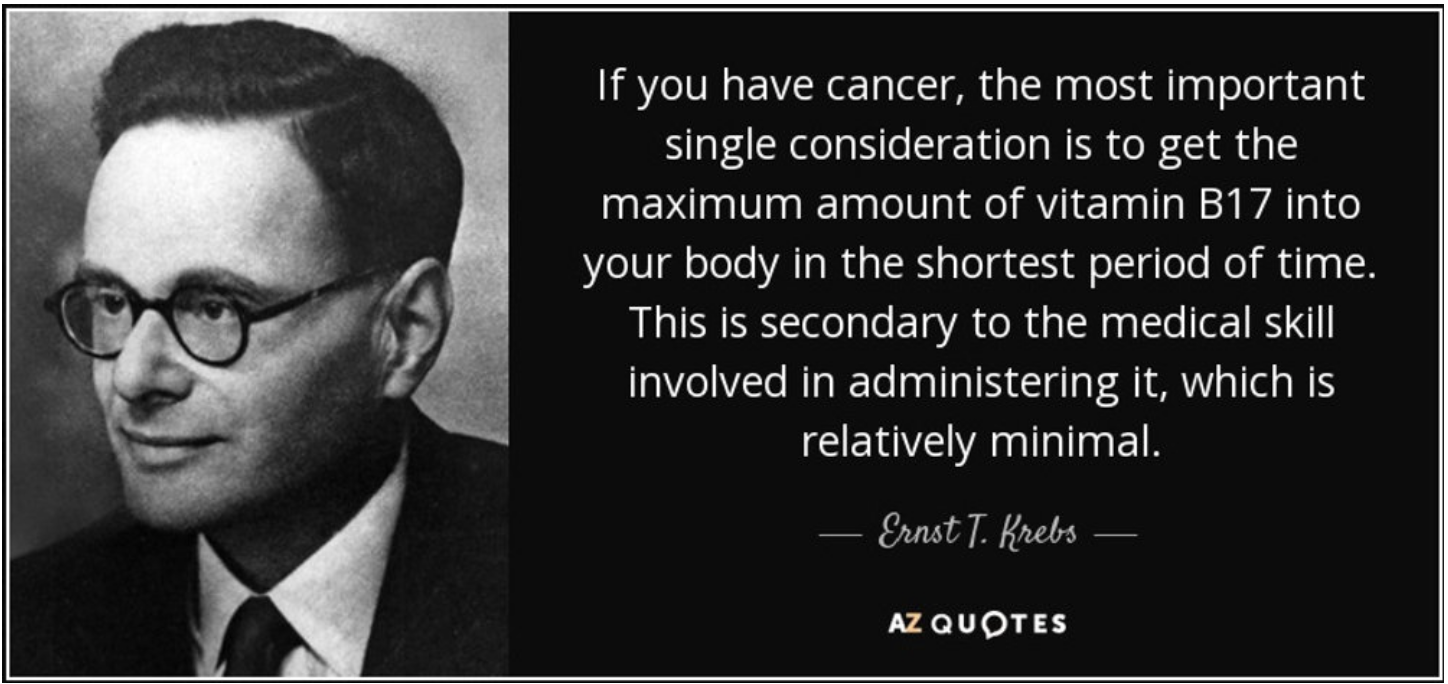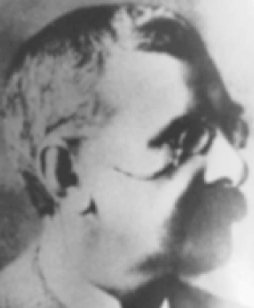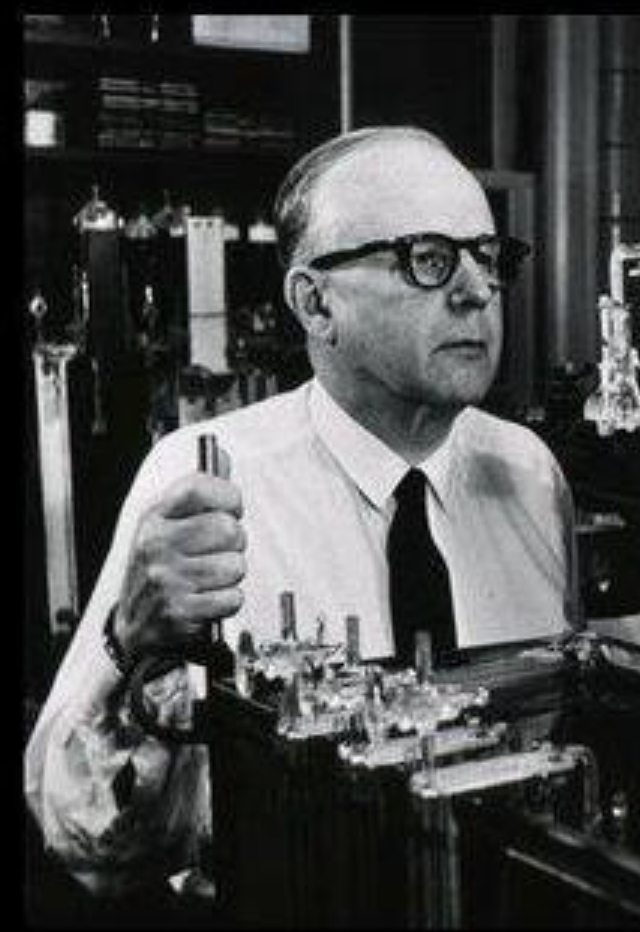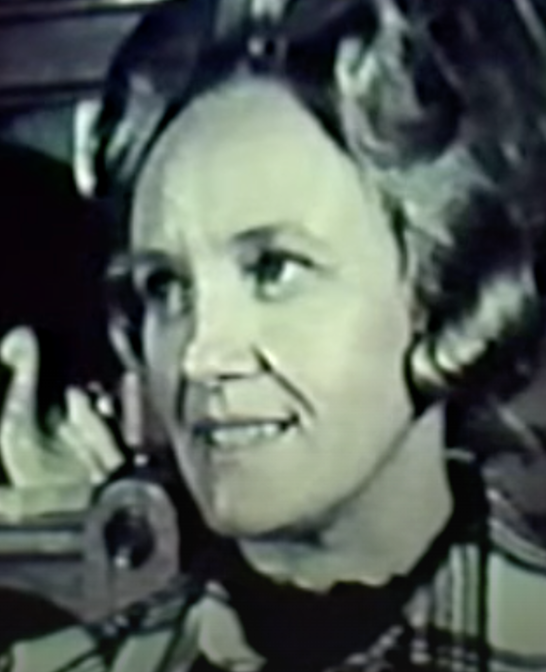
You’re most likely here because you’ve heard about the potential benefits of Vitamin B17, also known as Amygdalin, or its semi-synthetic pharmaceutical name, Laetrile.
The chemical properties of amygdalin, extracted from bitter apricot seeds, were first detailed by German chemists Liebig and Wohler in 1837. This followed its initial extraction seven years earlier by French chemists Pierre-Jean Robiquet and A. F. Boutron-Charlard. Amygdalin was later “rediscovered” in 1920 by California physician Dr. Ernst Theodore Krebs, Sr. His son, Dr. Ernst Krebs, Jr. through further research, developed the compound into the injectable form known as “Laetrile” or B17.
The following article is inspired by the findings of G. Edward Griffin in 1974. This article aims to provide a clear understanding of the benefits of B17, how to use it and how this incredible discovery needs to be incorporated into our daily lives. If you’re serious about cancer prevention or care, please take the time to read through this carefully. By the end, I’m confident you’ll be considering the inclusion of Vitamin B17 in your diet, whether you’re battling cancer or simply looking to maintain your health.

In 1952, Dr. Ernst T. Krebs Jr., a Biochemist in San Francisco, proposed that cancer is similar to other deficiency diseases such as scurvy or pellagra, rather than being caused by a mysterious germ, virus, or toxin. He believed that cancer is made worse by the absence of an essential compound in modern diets, identified as part of the nitrilosides family. These compounds are found in over 1,200 edible plants around the world, especially in fruit seeds and also in grains like maize, sorghum, millet, as well as in cassava, linseed, and bitter almonds – foods that have mostly been removed from our modern diets.
Krebs explained that cancer is both a chronic and a metabolic disease. A chronic disease is one that lasts a long time, often lifelong, and doesn’t go away on its own. A metabolic disease occurs due to abnormal chemical reactions in the body that disrupt the normal metabolism and are not contagious, meaning they can’t be passed from one person to another. Krebs noted that no chronic metabolic disease has ever been cured or prevented just by drugs or surgery; effective management has always involved proper nutrition. He emphasized the importance of focusing on diet for understanding and managing cancer.
Observations also support Krebs’s idea. For instance, domesticated pets sometimes eat certain grasses when they are sick, despite being otherwise well-fed. These grasses, like Johnston grass and Tunis grass, are high in nitrilosides or vitamin B17. Similarly, when required, primates at zoos will ignore the flesh of peaches or apricots and first eat the seeds, which are rich in nitrilosides.
Wild bears naturally eat a diet high in nitrilosides, choosing berries and the viscera of grazed animals, which contain these important grasses. However, in captivity, such as at the San Diego Zoo, their diets, though adequate in nutrition, are almost entirely lacking in nitrilosides. Over a six-year period, this deficiency was noted and associated with five of the bears developing cancer. This shows how crucial natural diets are in preventing diseases like cancer.
Dr. George M. Briggs, Professor of Nutrition at the University of California said, “The typical American diet is a national disaster. If I fed it to pigs or cows without adding vitamins and other supplements, I could wipe out the entire livestock industry.”

A quick look at what’s on the shelves in American grocery stores paints a clear picture: aisles are packed with high-carbohydrate foods that are heavily processed, refined, synthetically flavored, and loaded with chemical preservatives. Some manufacturers even take pride in how little real food is in their products. Millet, which was once a staple in the nation’s diet and is rich in nitrilosides, has been largely replaced by wheat, which contains hardly any nitrilosides. Similarly, sorghum cane has given way to sugarcane, with the same loss in nutritional value.
Our cattle are increasingly fed on fast-growing, low-nitriloside grasses, resulting in less vitamin B17 in the meat we consume. In some places, livestock diets now include 15% paper to speed up their growth for market. Over the past 50 years, the foods that once provided Americans with substantial amounts of natural vitamin B17 have been gradually phased out or replaced by foods almost devoid of this essential factor. Not coincidentally, during this same period, the cancer rate has steadily climbed to where it is today – one out of every four people in the United States is expected to develop this disease.
A definitive scientific test of the vitamin theory of cancer would involve taking a large group of people – thousands – and, over many years, consistently feeding them a diet rich in nitrile-containing foods, then observing the results. Luckily, this experiment has essentially been conducted with the Hunza people, among whom, there has never been a reported case of cancer. It’s worth noting that the average Hunza diet contains over 200 times more nitrilicide than the average American diet. Another cancer-free populations are the Eskimos, who historically did not experience cancer until they began adopting Western diets and lifestyles, after which their susceptibility to cancer rose above the American average. Similar patterns are observed in other populations around the world, like the Abkhasians near the Black Sea, the Hopi and Navajo Indians of North America, and certain native groups in South America and South Africa. What these groups all have in common is a diet high in nitrilosides, or vitamin B17.
For more than two decades, a growing number of people worldwide have embraced the vitamin theory of cancer and have adjusted their diets accordingly. This diverse group spans all ages, genders, and many advanced nations, with thousands in the United States alone. While it’s impossible to track each of them or conduct clinical examinations, they form a distinct and vocal group. Significantly, after adopting and maintaining a diet rich in vitamin B17, not a single individual in this group is known to have developed cancer. Let’s emphasize that: while cancer affects one out of every four people, none of these thousands on a B17-rich diet have contracted the disease.

In 1902, Professor John Beard from the University of Edinburgh in Scotland, a professor of embryology, noted no discernible differences between highly malignant cancer cells and certain pre-embryonic cells that are normal in early pregnancy stages. These normal cells, known as trophoblasts, led Professor Beard to conclude that cancer and trophoblasts are essentially the same; forming the basis for what is called the Trophoblastic Thesis of Cancer. Trophoblasts during pregnancy exhibit all the classic characteristics of cancer – they spread and multiply quickly as they penetrate the uterine wall, creating a site for the embryo to attach for protection and nourishment.
The trophoblast originates from a chain reaction that begins with a cell known as the diploid totipotent. For simplicity, we can call this the total life cell because it contains all the characteristics of the complete organism and has the potential to develop into any organ, tissue, or the entire embryo. About 80% of these total life cells are located in the ovaries or testes, serving as a genetic reservoir for future generations. The remaining cells are distributed throughout the body, their role, not fully understood but possibly related to the regeneration and healing of damaged tissue.
The hormone estrogen is well known for its role in affecting changes in living tissues. Although typically associated with women, estrogen is present in both sexes and plays several crucial functions. It shows up in significant amounts wherever the body is damaged – whether by physical injury, chemical exposure, or illness – acting as a stimulator for body repair. It’s now understood that estrogen triggers the total life cell to produce trophoblasts. When this happens in cells derived from a fertilized egg, the result is the formation of a placenta and umbilical cord, providing nourishment to the embryo. However, when triggered non-sexually, as part of the body’s general healing process, the outcome is cancer.
When cancer starts to develop, the body tries to contain it by encasing it with cells similar to those in the affected area, resulting in the formation of a bump or lump. Under microscopic examination, most tumors appear as a mix of trophoblast and the surrounding cells. This has led some researchers to prematurely conclude that there are many different types of cancer. However, the variation seen in tumors correlates with their benign nature – that is, the extent to which they contain non-cancerous cells. The more malignant the tumor, the more it resembles other tumors and exhibits the classic characteristics of pregnancy trophoblasts. The most malignant cancers, chorioepitheliomas, are nearly indistinguishable from trophoblast cells. As Dr. Beard noted over 70 years ago, they are essentially the same.
Turning to the body’s defense mechanisms, understanding how nature combats cancer is essential before we can hope to conquer it. All animals have billions of white blood cells, one function of which is to destroy anything foreign and harmful. It would seem logical, then, that they would attack cancer cells. However, since cancer cells (trophoblasts) are not foreign but a vital part of the life cycle, they are equipped with a protective mechanism: a thin protein coating that carries a negative electrostatic charge, repelling the negatively charged white cells.
A key part of the solution lies in the pancreas, which secretes an enzyme called trypsin. This enzyme, when present in sufficient quantities, can digest the protective protein coat of the trophoblast. Once this barrier is removed, the exposed cancer cells can be attacked and destroyed by the white blood cells.
Interestingly, trophoblast cells in the embryo continue to grow and spread until the eighth week of pregnancy, when they suddenly stop and are destroyed. This change coincides with the time the baby’s pancreas starts functioning. Notably, the upper intestines, near where the pancreas empties, are one of the few areas in the human body where cancer is almost never found. Furthermore, diabetics, who have a malfunctioning pancreas, are three times more likely to develop cancer than non-diabetics. These observations, which have baffled medical researchers for years, are now explainable through the trophoblastic thesis of cancer.
But what if the pancreas is underperforming or if the rate of cancer growth is so rapid that the enzyme trypsin can’t keep up? Nature has a contingency in place – a secondary defense, capable of stepping in when the primary system falters. This involves a special chemical compound that selectively targets and destroys malignant cells while nourishing healthy ones. This re-introduces the concept of vitamins into our discussion about cancer.
The compound in question is vitamin B17, found naturally in foods containing nitrilosides. Also known as amygdalin, this substance has been extensively used and studied for over a century. However, in its concentrated and semi-synthetic form, developed by Dr. Krebs for cancer therapy, it is known as Laetrile. For simplicity, we’ll refer to it here as vitamin B17. The B17 molecule consists of two sugar units, one benzaldehyde, and one cyanide unit, all bonded tightly together. As is well-known, cyanide is highly toxic and potentially deadly in large amounts. However, in this bonded state within B17, it is chemically inert and harmless to living tissues. There is only one substance that can unlock this molecule and release the cyanide, and that is the enzyme beta-glucosidase, which we’ll refer to as the unlocking enzyme. When vitamin B17 encounters this enzyme, not only is the cyanide released but also the benzaldehyde, which by itself is highly toxic. Together, these substances are significantly more lethal than either component alone. Importantly, this unlocking enzyme is found predominantly in cancer cells, where it is abundantly available. Thus, vitamin B17 is activated specifically at the site of cancer cells, making it lethal only to them.
Additionally, there’s another enzyme called rhodanese, known here as the protecting enzyme. This enzyme can instantly neutralize cyanide by converting it into by-products that are beneficial and essential for health. It is abundantly present throughout the body, except in cancer cells, which lack this protective mechanism. This creates a selective system that effectively targets and kills cancer cells while supporting the health of normal cells – an elegantly precise and natural mechanism that seems too well-designed to be coincidental.
There’s considerable speculation today about carcinogens – the agents purportedly causing cancer. We’re informed that factors like smoking, excessive sun exposure, chemical additives in food, or even certain viruses can initiate cancer. However, as we’ve discussed, the root cause is more fundamentally linked to deficiencies in specific enzymes and vitamins; these other factors simply act as triggers. Any condition that causes prolonged stress or damage can prompt the production of estrogen as part of the body’s healing response. If the body lacks the necessary nutrients to counteract this, cancer can develop. Thus, specific carcinogens don’t directly cause cancer; they merely influence where it might manifest.
Of course, nature’s defenses against cancer extend beyond pancreatic enzymes and vitamin B17. Research indicates that other enzymes, additional vitamins, oxygenation of the blood, pH levels, and even body temperature may play significant roles. Among these, vitamin B17 is seen as the most direct and crucial, but all these factors are part of an inter-connected natural defense system. Fortunately, to leverage these defenses effectively in practice, one doesn’t need a deep theoretical understanding of each component. It’s essential to know that consuming a diet rich in all vitamins and minerals while minimizing bodily stress and damage is beneficial. The effectiveness of vitamin B17 in treating cancer has been confirmed in lab settings beyond any doubt.

For instance, Dr. Dean Burk, head of the Cytochemistry Section at the National Cancer Institute, reported that in tests on animal tissue, B17 had no impact on normal cells but released enough cyanide and benzaldehyde to kill cancer cells on contact. He observed, “When we add Laetrile to a cancer culture under the microscope, we can see the cancer cells dying off like flies.”
While it’s accurate to say vitamin B17 is harmless to non-cancer cells, a more precise statement might be that it’s as safe as any naturally occurring substance. For example, essential elements like water or oxygen can be deadly in excessive amounts, and so can vitamin B17. Anecdotal reports suggest a man died after consuming nearly a cup of apple seeds, although this case has never been verified. Theoretically, eating the apples along with the seeds would provide enough rhodanese to neutralize the effects of the seeds, but the volume required would be impractical.
Nature has its limits and cannot foresee excessive consumption; hence, a practical guideline is not to consume more seeds at one time than one would typically eat if consuming the whole fruit. This rule offers a large margin of safety and can be followed with confidence.
Regarding Amygdalin or Laetrile, concerns about toxicity are even less warranted. Pharmacology reference books for over a century have listed this substance as non-toxic. Despite widespread use globally, there has never been a confirmed report of death or serious illness from Laetrile. In experiments, white rats fed 70 times the normal human dose of Laetrile only exhibited increased appetite, weight gain, and improved health – effects one would expect from a beneficial vitamin. Laetrile has been found to be far less toxic than many common substances, including aspirin. Dr. Burk from the National Cancer Institute has even demonstrated that Laetrile is less toxic than sugar.
DOES LAETRILE OR VITAMIN B17 EFFECTIVELY CONTROL CANCER IN HUMANS?
Now, addressing whether Laetrile or vitamin B17 effectively controls cancer in humans, and whether there’s statistical evidence to support this, we find contention. Mainstream medical spokespeople, referencing a single 1953 report by the Cancer Commission of the California Medical Association, have denied Laetrile’s effectiveness, stating, “No satisfactory evidence has been produced to indicate any significant cytotoxic effect of Laetrile on the cancer cell.” This report has led directly to government restrictions against prescribing, transporting, or recommending Laetrile. The report’s credibility is questionable as further scrutiny revealed they might have falsified their summary of Laetrile experiments. For instance, they reported that microscopic examinations showed no beneficial effect from Laetrile on tumors, yet a decade later, it emerged that a pathologist involved in those experiments had INDEED observed tumor destruction, caused by Laetrile. Additionally, they claimed unsuccessful attempts to release cyanide from Laetrile, contradicting reports from reputable labs, including the American Medical Association’s Chemical Lab and the California Food and Drug Lab, which had succeeded in doing so. The doses used in their studies were also far too small to be conclusive. Today, doses of 2 to 3 grams in a single injection are common, with cumulative doses of 30 to 40 grams showing tangible improvements, unlike the maximum of 2 grams used in their divided tests.
Five patients had only received 2 injections, and five patients had received just 1. So, it’s not surprising that these experiments failed to provide convincing evidence that Laetrile works. What is surprising, however, is that these and similar discredited reports continue to be cited by the American Cancer Society as proof that Laetrile is ineffective!
But let’s return to the original side of this question. What evidence is there to support the claim that Laetrile DOES work? As we have seen, the health records of the Hunzakuts, the Eskimos and many other groups around the world are statistically conclusive that vitamin B 17 does control cancer in human beings – with an effectiveness approaching 100%. There can be little controversy over that, but what about cancer once it already has started? Can B17 restore a person to health after he has contracted the disease? The answer is yes, if it’s caught in time and if the patient isn’t too badly damaged by prior x-ray treatment or toxic chemotherapy drugs.
Unfortunately most cancer victims start taking Laetrile only after their disease is so far advanced that they’ve been given up as hopeless by routine medical channels. Usually, they’ve been told that they have only a few more months or weeks to live and it’s in this tragic state of near death that they turn to vitamin therapy as a last resort. If they die, and indeed many of them do, then they are counted as statistical failures for Laetrile. In reality it’s a victory for Laetrile that any of them should be saved at this stage, because once a deficiency disease has progressed so far, the damage it does simply can’t be reversed. A man who has been shot with a gun can have the bullet removed, but still die from the wound. Likewise, a patient can have his cancer destroyed by vitamin B17 and still die from the irreversible damage already done to his vital organs.
And so, in view of this tremendous handicap, the number of terminal patients who have been restored to health is most impressive. In fact there literally are thousands of such case histories in the medical record. The American Cancer Society has tried to create the impression that the only ones who claimed to have been saved by Laetrile are those who merely were hypochondriacs and who never really had cancer in the first place. But the record reveals quite a different story. Let’s take a look at just a few examples:

Mr. David Edmonds of Pinole, California, was operated on in June 1971 for cancer of the colon, which had also metastasized to the bladder. When surgeons opened him up, they found that the malignant tissue was so widespread it was nearly impossible to remove completely. They relieved the blockage of the intestines by performing a colostomy. Five months later, the cancer returned, and Mr. Edmonds was told he had only a few months to live. His wife, a nurse, decided to try Laetrile. Six months later, Mr. Edmonds was not only still alive but felt well enough to resume almost all normal activities. An exploratory examination revealed that the cancer in his bladder had completely disappeared. He insisted on another surgery to see if his colon could be reconnected, and during this procedure, surgeons found no remaining cancerous tissue. His colon was reconnected, and he went home to recuperate, marking the first time in that hospital’s history a reverse colostomy had been performed. Mr. Edmonds went on to live a healthy and vigorous life.

In 1967, Mrs. Joan Wilkinson had a tumor removed from her lower left leg, just below the thigh. The cancer recurred four months later, requiring further surgery to remove muscle and bone. A year later, a lump appeared in her groin, and a biopsy showed the cancer had returned and was spreading. Her doctors planned more drastic surgery that might have included amputation of her leg at the hip, and possibly removing her bladder and one kidney. They intended to check her lungs first; if the cancer had spread there, they wouldn’t proceed with the amputation because there wouldn’t be any chance of saving her anyway. Encouraged by her sister and a friend, Mrs. Wilkinson chose to try Laetrile instead of surgery. Her doctor warned her she might not live more than 12 weeks without the surgery. Five weeks after starting Laetrile, the lump in her groin had disappeared, and years later, she still lived a healthy, productive life.

Dr. Dale Danner, a Podiatrist from Santa Paula, California, developed pain in his right leg and a severe cough in 1972. X-rays showed carcinoma in both lungs and what seemed to be massive secondary tumors in his leg. The cancer was deemed in-operable and resistant to radiotherapy, with a prognosis of certain death. At his mother’s insistance and primarily just to please her, he obtained a large supply of Laetrile in Mexico, but he was convinced from what he had read in the medical journals that it was nothing but quackery and a fraud. Within a few weeks, his pain and coughing had intensified to unbearable levels – to the point where no amount of medication could hold it back. Forced to crawl on his hands and knees, and unable to sleep for three days and three nights, he became despondent and desperate. Finally, he turned to his supply of Laetrile. In desperation and exhaustion, he administered a massive dose of Laetrile directly into an artery. Astonishingly, when he woke up 36 hours later, the pain and cough had greatly subsided, his appetite returned, and he felt better than he had in months. Convinced of its effectiveness, he continued treatment and returned to work three months later.
Since Laetrile was developed in 1952, there have been thousands of documented case histories similar to those mentioned. When viewed collectively, these cases begin to form meaningful statistical data, which is often more persuasive than individual anecdotes. At least 26 medical papers written by reputable physicians who have experimentally used Laetrile in treating their own patients, all conclude that Laetrile is effective for cancer treatment. Despite these findings, the American Cancer Society and other spokespeople for the medical establishment continue to dismiss these conclusions, claiming that only misguided individuals endorse Laetrile. However, the doctors conducting these experiments are far from quacks. Here are a few notable names:
- In West Germany, Dr. Hans Nieper, MD, Director of the Department of Medicine at the Silbersee Hospital in Hanover, is a pioneer in medical uses of cobalt and developer of the anti-cancer drug cyclophosphamide. He is regarded as one of the world’s most respected cancer specialists.
- In Canada, Dr. NR Bouziane, Director of research laboratories in Montreal, serves on the hospital’s tumor board overseeing chemotherapy and is Dean of the American Association of Bioanalysts.
- In the Philippines, Dr. Manuel Navarro, a Professor of Medicine and Surgery at the University of Santo Tomas in Manila, is renowned internationally as a cancer researcher with over 100 major scientific papers, some presented at the International Cancer Congress.
- In Mexico, Dr. Ernesto Contreras operates the well-known ‘Good Samaritan Cancer Clinic’ in Tijuana, and is one of Mexico’s most distinguished medical figures, with post-graduate training from Harvard’s Children’s Hospital in Boston.
- In Belgium, there is Dr. Maisin from the University of Leuven.
- In Italy, Dr. Guidetti is associated with the University of Turin.
- In Japan, Dr. Sakai is a prominent Physician in Tokyo.
- In the United States, respected names include Dr. Burk of the National Cancer Institute, Dr. Morrone of the Jersey City Medical Center, Dr. Krebs who developed Laetrile, Dr. Richardson of San Francisco, and many others across 20 diffeent countries.
These researchers report that most of their patients experience beneficial side effects from Laetrile treatment, including an immediate lowering of blood pressure, improved appetite, increases in hemoglobin and red blood cell counts, and most importantly, relief from pain without the need for narcotics. Even when Laetrile therapy is initiated too late to save a patient, this pain relief is considered a significant benefit.
No doubt, most of the opposition to vitamin therapy comes from well-intentioned people who simply don’t have all the facts, but vested interests also play a significant role. As stated at the beginning of this article, the science of cancer therapy isn’t nearly as complicated as the politics of cancer therapy. The history of how these vested interests have succeeded in influencing the medical profession, government agencies, and public opinion is a fascinating story in itself, but of course, that’s a story for another day.
Watch this unbelievable interview about the coverup of Laetrille.
Ralph W. Moss, PhD, Science Writer in Public Affairs, Memorial Sloan-Kettering Cancer Center, New York City – 1974 – 1977, shares his incredible story..

